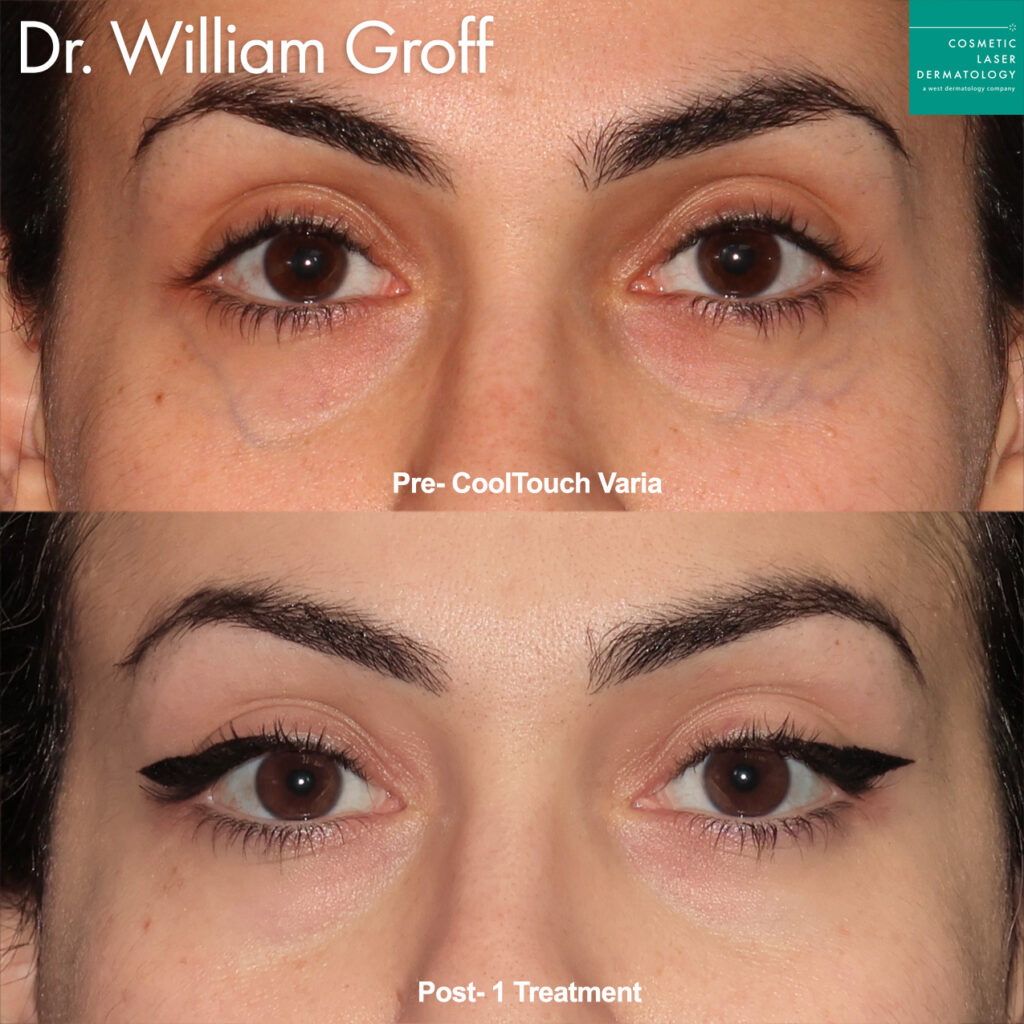Concerned about those bluish lines under your eyes? You’re not alone. This comprehensive guide explores the causes of under-eye veins, effective treatment options, and preventative strategies to minimize their appearance. Whether you’re seeking quick fixes or long-term solutions, we’ll provide dermatologist-approved insights to help you achieve brighter, smoother-looking under-eyes.
Decoding Under-Eye Veins
Those subtle blue or purple lines under your eyes are simply blood vessels. Due to the thin and delicate nature of under-eye skin, these vessels can become more visible. Understanding why they appear is the first step toward effective management.
Why Are They More Noticeable?
Several factors contribute to the prominence of under-eye veins:
- Thinning Skin: The skin under the eyes is naturally thin and becomes even more translucent with age, much like a well-worn garment. This allows the underlying blood vessels to show through more easily.
- Collagen Loss: Collagen provides structural support to the skin. As collagen diminishes with age, skin loses elasticity and thins, increasing vein visibility.
- Genetics: Some individuals are genetically predisposed to having more visible veins, similar to inheriting eye or hair color.
- Lifestyle Factors: Sun exposure, allergies, dehydration, and lack of sleep can all exacerbate under-eye vein visibility. Sun damage weakens skin, allergies cause inflammation, dehydration reduces skin plumpness, and insufficient sleep can lead to fluid retention and puffiness.
- Fair Complexion: Lighter skin tones offer less pigment to camouflage the blood vessels, making them more apparent.
Effective Solutions for Under-Eye Veins
Fortunately, there are various approaches to address under-eye veins, ranging from simple home remedies to advanced medical interventions.
At-Home Remedies
These simple, cost-effective remedies can provide temporary relief:
- Cool Compresses: Applying a cold compress or chilled cucumber slices constricts blood vessels, temporarily minimizing their appearance.
- Caffeine-Infused Tea Bags: The caffeine in tea, particularly green tea, acts as a vasoconstrictor, narrowing blood vessels and reducing their visibility.
- Gentle Massage: Light massage around the eye area can improve circulation and lymphatic drainage, potentially lessening fluid buildup and vein prominence. Be extremely gentle to avoid further skin thinning.
Topical Treatments
Certain topical treatments can support long-term skin health and potentially reduce vein visibility:
- Vitamin C Serums: Vitamin C is a potent antioxidant that strengthens skin and boosts collagen production, potentially improving skin thickness and reducing vein transparency.
- Retinoids: These vitamin A derivatives promote collagen production and improve skin texture. Start with a low concentration and consult a dermatologist, as retinoids can cause initial irritation.
Medical Interventions (Consult Your Doctor)
For more pronounced or persistent veins, medical treatments can provide more lasting results. Always consult a qualified dermatologist or medical professional to determine the best approach for your individual needs.
- Sclerotherapy: A solution is injected directly into the vein, causing it to collapse and fade. Blood flow is then rerouted through healthier veins. Learn more about sclerotherapy…
- Laser Therapy: Targeted laser energy heats and shrinks or eliminates the vein. Different lasers are available, and your doctor can recommend the most appropriate type for your skin type and vein characteristics.
- Dermal Fillers: Injectable fillers plump the under-eye area, creating a smoother surface that camouflages veins. This is often a suitable option for individuals with under-eye hollows or dark circles.
You can learn more about ventral hernia pictures and VisionMD to get more information.
The Sclerotherapy Cost Factor
The average cost of sclerotherapy for under-eye veins is approximately $343 per session. However, the total cost depends on several factors:
- Number of Sessions: Multiple sessions may be necessary for optimal results, depending on the number and size of the veins.
- Injections per Session: More injections usually equate to a higher cost per session.
- Type of Sclerotherapy: Traditional and foam sclerotherapy exist. Foam sclerotherapy, which uses a foamy sclerosing agent, might offer better coverage, potentially requiring fewer sessions.
- Follow-Up Appointments: Factor in the cost of follow-up visits to monitor healing and progress.
A consultation with a qualified professional is essential for a personalized cost estimate.
Preventing Under-Eye Veins
While some factors, like genetics and aging, are unavoidable, proactive measures can minimize the appearance of under-eye veins and maintain the health of the delicate skin surrounding your eyes:
- Sun Protection: Daily sunscreen application with SPF 30 or higher is crucial. UV rays damage skin and contribute to thinning, making veins more apparent.
- Hydration: Drinking plenty of water helps maintain skin plumpness and elasticity, reducing vein visibility.
- Healthy Lifestyle: A balanced diet, regular exercise, and sufficient sleep promote healthy circulation and overall skin health, contributing to a more youthful appearance.
- Gentle Eye Care: Treat the under-eye area with utmost care. Avoid harsh rubbing or scrubbing, which can damage capillaries and worsen the appearance of veins.
Ongoing Research and Future Directions
Research into skin aging and under-eye vein treatments is constantly evolving. Scientists are exploring new techniques and technologies, including potential dietary supplements that may influence collagen production. While promising, these findings require further investigation.
A Word of Caution
Under-eye veins are usually harmless and a natural part of aging for many. While treatments can improve their appearance, embracing them is also perfectly acceptable. The decision to pursue treatment is personal. Always consult a qualified healthcare provider for personalized advice and realistic expectations.
Remember, this information is for educational purposes and does not substitute professional medical advice.
- Glass Lunch Box Containers Offer Healthy, Leak-Proof Meal Prep - December 21, 2025
- Glass Bento Boxes Offer a Healthy, Eco-Friendly Lunch Solution - December 20, 2025
- Glass Bento Containers Make Packing Lunch Easier and Healthier - December 19, 2025










